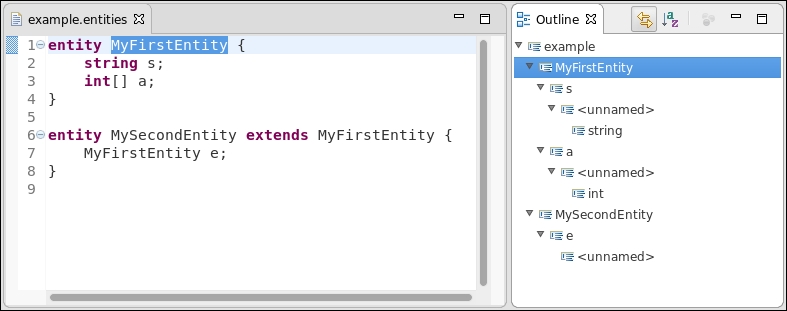In this section, we show typical concepts of the IDE for your DSL that you may want to customize. Xtext shows its usability in this context as well, since, as you will see, it reduces the customization effort.
Xtext UI classes make use of an ILabelProvider interface to obtain textual labels and icons through its methods getText and getImage, respectively. ILabelProvider is a standard component of Eclipse JFace-based viewers. You can see the label provider in action in the Outline view and in content assist proposal popups (as well as in various other places).
Xtext provides a default implementation of a label provider for all DSLs, which does its best to produce a sensible representation of the EMF model objects using the name feature, if it is found in the corresponding object class, and a default image. You can see that in the Outline view when editing an entities file, refer to the following screenshot:

However, you surely want to customize the representation...



